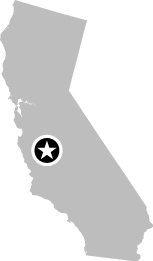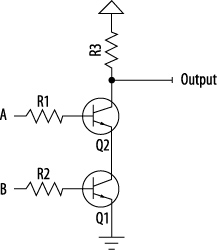086
The Computer History Museum, Mountain View, CA
 37° 24′ 51.74″ N, 122° 4′ 36.54″ W
37° 24′ 51.74″ N, 122° 4′ 36.54″ W
![]()
![]()
![]()
Silicon Valley’s Finest
Almost all major science museums around the world have sections tracing the history of the computer, but they all pale in comparison to the Computer History Museum in Mountain View, California. The museum is housed in the old Silicon Graphics headquarters (itself an iconic Silicon Valley building), which the museum bought in 2002. Silicon Graphics was once a maker of high-performance computers for computer graphics that made possible 1990s films like Jurassic Park; its former headquarters is located on North Shoreline Boulevard next to Charleston Park, and the design and architecture of the building speak of the extreme wealth of Silicon Valley prior to the end of the Internet boom.
The museum is a work in progress, with as much information available online through its excellent website (http://computerhistory.org/ ) as in the building itself. But unlike many computer science museums (including the worth-avoiding Tech Museum of Innovation in San Jose), the Computer History Museum brings computing to life through exhibits that are explained both in general terms for the casual visitor, and in glorious detail for the gearheads. You’ll get the most out of your visit by going on a docent-led tour. These tours are not canned recitals from a script, but truly bring to life the machines in the collection. In addition, everything is free—the museum is supported by donations of money, machines, and software. Consider making a donation before you leave.
A tour of the 500 pieces of the collection on display is a good way to get oriented. The collection includes bits of 1954’s SAGE (Semi-Automatic Ground Environment; see Figure 86-8), which was built as part of the U.S. air defense mechanism during the Cold War. SAGE weighed 300 tons, and incorporated just one comfort item for the operator looking out for Soviet bombers: a cigarette lighter. Some parts of the SAGE system were still in use in 1983, with replacement parts purchased from Soviet-bloc countries because they were unavailable in the U.S.

Figure 86-8. SAGE on display at the museum; courtesy of Flickr user Jurvetson
The 1960s collection includes the industry-dominating IBM 360 mainframe computer with its spinning tape drives. 1960s attitudes are on display with the Honeywell Kitchen Computer sold by upscale department store Neiman Marcus in 1969: the advertising tagline reads, “If she can only cook as well as Honeywell can compute.” The computer incorporated a cutting board and was preprogrammed with a collection of recipes; it’s not clear if any were sold.
The museum has an excellent collection of supercomputers including a CRAY-1, CRAY-2, and CRAY Y-MP, as well as a Connection Machine CM-1. More recent computer history covering the personal computer revolution includes exhibits of the Altair 8800 (the machine that made Bill Gates leave Harvard and start “Micro-Soft”), an Apple I, the original IBM PC, the almost-but-not-quite portable Osborne 1 Portable Computer (only 24 pounds!), the Commodore 64, the Apple Lisa and Macintosh, and a French Minitel. Along with the machines, the museum has also preserved software including Microsoft Windows 1.0, and peripherals such as the 1978 Dover Laser Printer.
Pre-computer history is covered with a collection of mechanical devices (such as slide rules), a Hollerith Census Machine from 1889 that used punch cards, and a Jacquard Loom (also using punch cards for weaving).
A demonstration well worth seeing is the operation of the only working DEC PDP-1 in the world (this happens twice monthly, on a Saturday afternoon). The PDP-1 was first built in 1959 (the example on display was made in 1963 and restored to full working condition in 2004) and was the first commercial, interactive minicomputer. Data is fed in using a punched or magnetic tape, and the user interacts with the machine using a typewriter/printer combination, or the screen and lightpen. The PDP-1 has a memory of about 9 kilobits, but that was enough for serious scientific applications, playing music, and a game: Spacewar!.
Spacewar! is demonstrated along with the PDP-1, with two players flying ships orbiting a star, and trying to shoot each other while avoiding the star’s gravity.
Practical Information
The Computer History Museum is located on North Shoreline Boulevard in Mountain View, California, and is accessible directly from US-101 at the Shoreline Boulevard exit. It can be reached from the Mountain View Caltrain Station via the Caltrain Shoreline Shuttle. Full details can be found on the museum’s website, http://computerhistory.org/.






